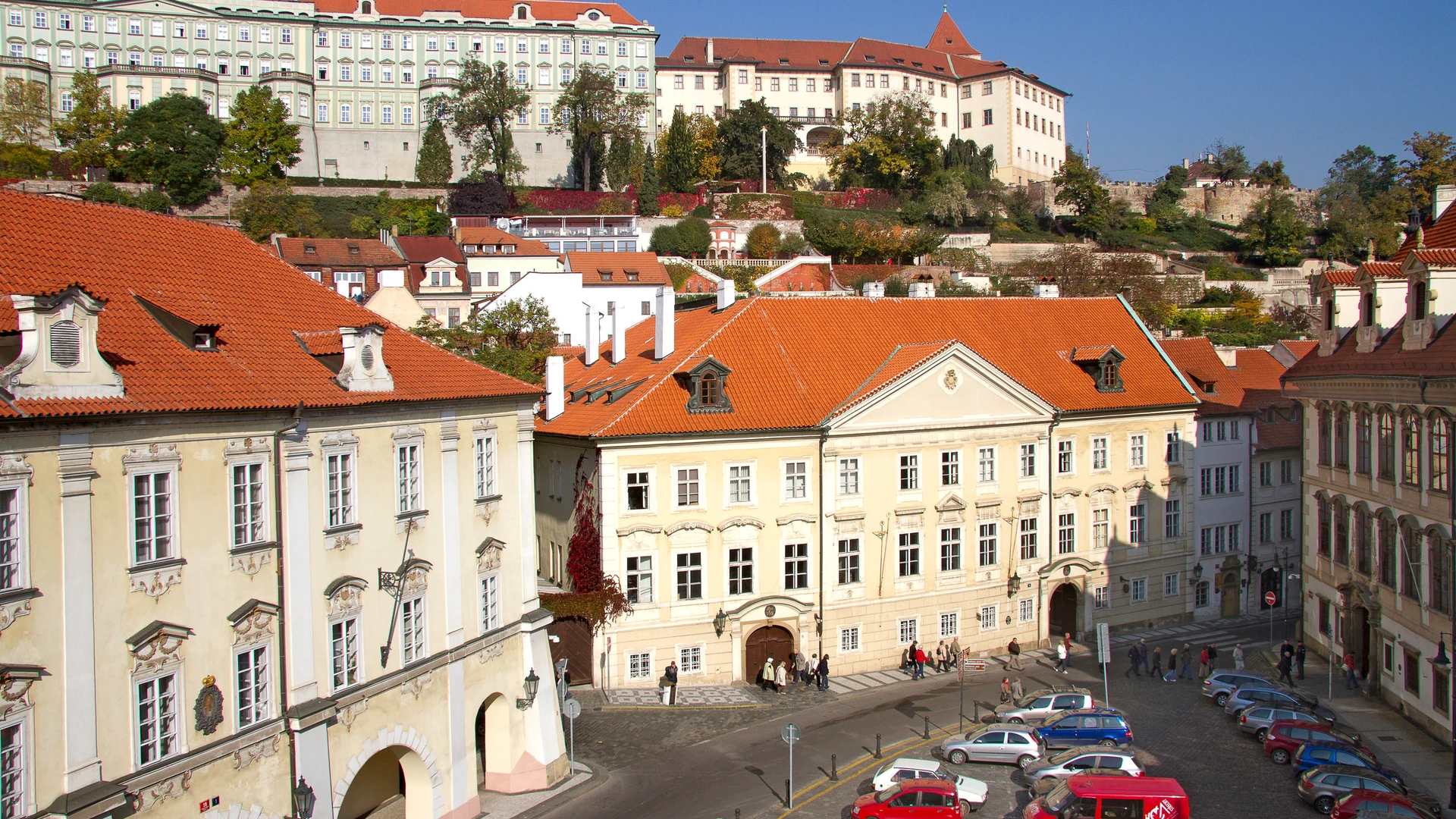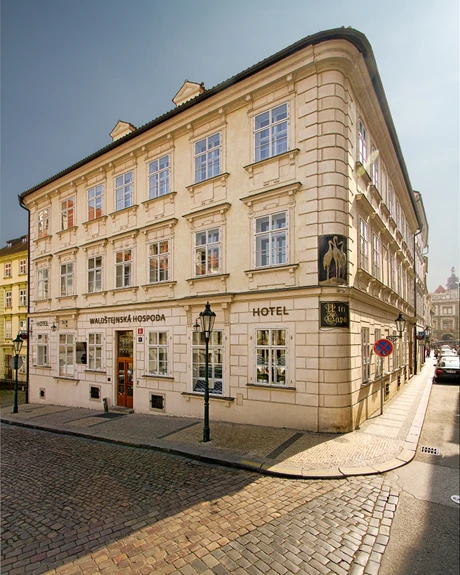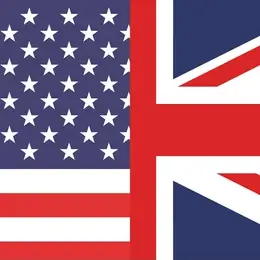Valdštejn Palace
The most representative hall of this palace, whose northern gateway faces the Prague Castle, is the Main Hall. The historical rooms of the palace are accessible to the public free of charge at the weekends. Next to the Main Hall, Valdštejn's representative parlours are located: the Knight Hall, the Antechambre, and the Audience Hall. In the opposite wing of the Valdštejn Palace, parallel to the Main Hall, two hallways are located: the Mythology Hallway and the Astrological Hallway one floor higher. Both hallways are richly decorated with frescoes and stucco decorations. The Mythology Hallway used to be connected by a staircase to spacious stables for as many as 40 horses. It is interesting that every horse housed in these stables would have its portrait above its box. Nowadays, the stables have become to house the Meeting Hall.
Albrecht Valdštejn had the complex of palaces built in 1623 in the place of the former Trčkovský palace, 26 other houses, three gardens and a brickworks. Renowned Italian architects, builders and artists participated in the construction. In 1648, the palace fell victim to the looting of the Swedish army that took all valuable objects including bronze sculptures of the emperor Rudolph II by Adrian de Vries and transported them to Sweden.
The palace belonged to the property of Valdštejn heirs until 1945. After that it became the property of the state that turned it into the seat of public service institutions. The palace has been the seat of the upper chamber of the Parliament of the Czech Republic, the Senat, since 1996.
The extensive reconstruction of Valdštejn Palace that took place in 2003 was awarded by Europa Nostra award.





